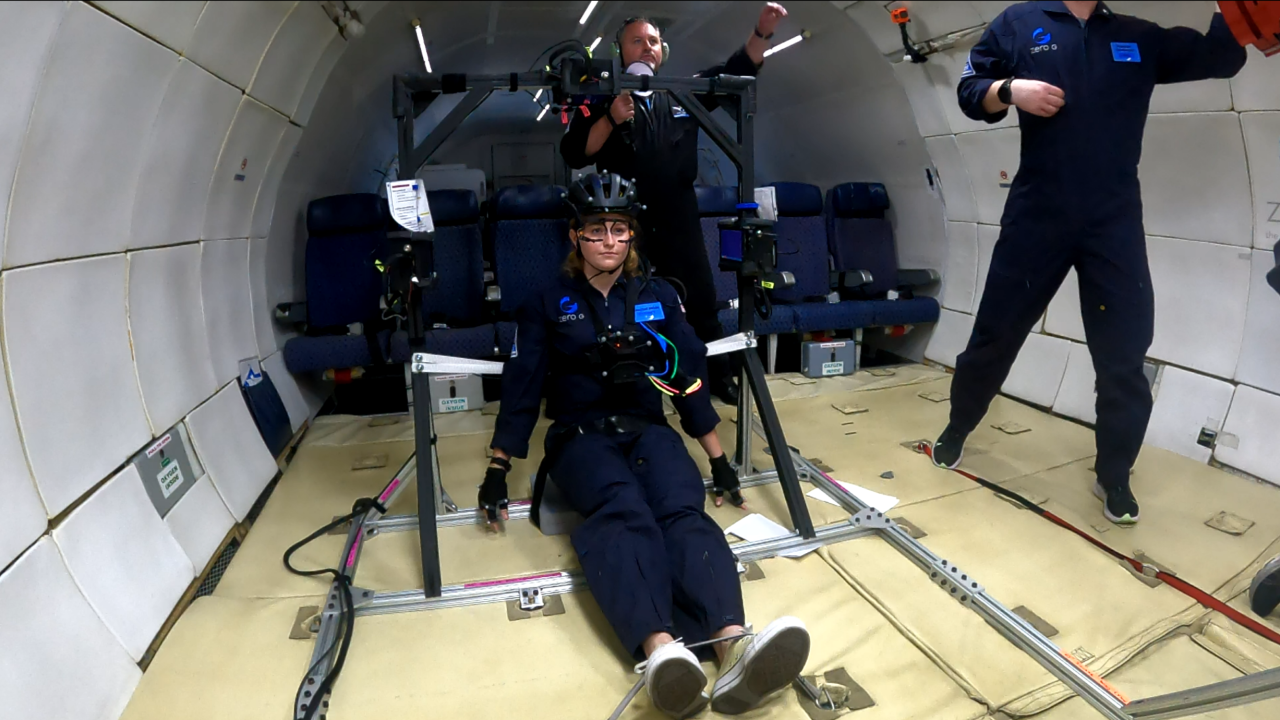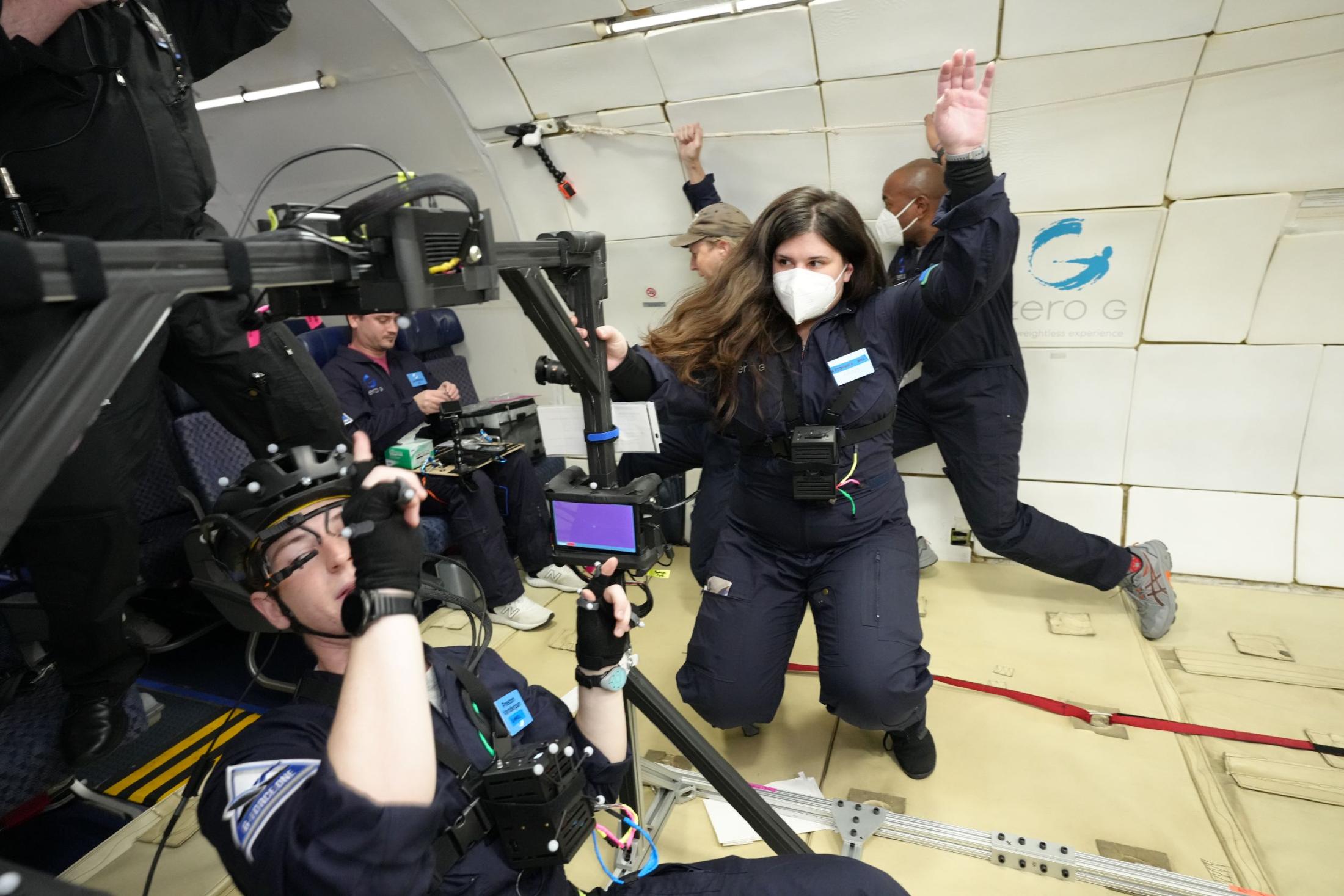
Head-Mounted IMU Signaling as a Countermeasure for Gravitational-Induced Motion Sickness
The human vestibular system can require days to adapt to a new gravitational environment, whereas spaceflight gravitational transitions are measured in minutes or hours. This delay in adaptation often results in Space Adaptation Sickness (SAS), which diminishes astronaut performance and potentially increases risk to mission objectives and crew safety. While vestibular dysfunction is a well-documented risk to space missions, no non-pharmaceutical countermeasure has yet been broadly successful. However, astronauts have been observed altering their head movement patterns as they adapt to prevent or attenuate SAS symptoms.
The CHANGES (Capturing Human Activity in Novel Gravitational Environments in Space) project is developing a non-pharmaceutical countermeasure to provide users with a means to self-limit head motions that may worsen SAS symptoms. This wearable device provides objective external cues that alert the user to head movements that may provoke neuro-vestibular dysfunction. The user can use this feedback to attenuate their head movement and potentially prevent the onset or worsening of performance-inhibiting symptoms. In doing so, the device serves as both a real-time, in-situ SAS countermeasure and as a pre-mission training aid which supports self-directed adoption of less provocative movement patterns prior to entering the flight environment.
The CHANGES team, with the support of the NASA Flight Opportunities program, is tasked with validating this novel technology in microgravity conditions aboard parabolic flights. An external motion capture system, not shown, tracks her movements while she completes a scan-and-reach task that provokes head motion. So far, the prototype has flown on 120 parabolas spread across four parabolic flights in December 2021 and June 2022, and has another two flights scheduled for May 2023.
Media Resources



